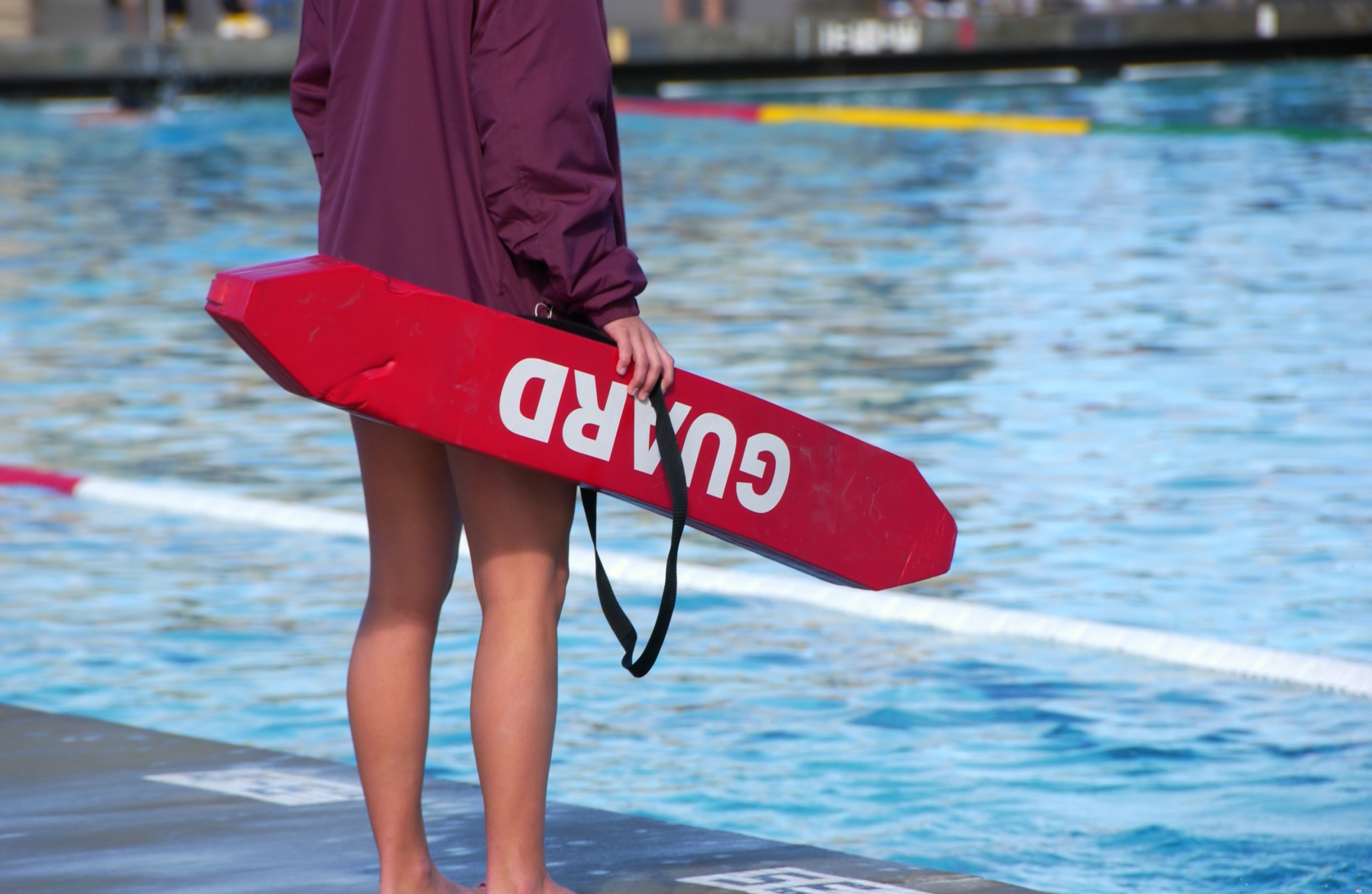
The third week of July is considered National Drowning Prevention week. Ten people die from accidental drowning each day in the United States. The Center for Disease Control reports that one in five people who die of drowning are 14 and younger. It’s number 5 on the list of accidental deaths following maternal complications and sudden infant death syndrome.
Contrary to popular belief, there are five types of drowning: Near drowning, freshwater drowning, saltwater drowning, dry drowning and secondary drowning. I’m going to focus on recognizing the two primary types of drowning: Dry Drowning and Near Drowning.
What is Dry Drowning?
Dry drowning doesn’t reach the lungs like near drowning. Instead, inhaling water causes the muscles in your vocal cords to spasm and close. This constricts the airways which makes breathing difficult. These symptoms escalate with time. Those signs are only noticeable ranging from 24 hours to days after swimming or ingesting water. In contrast to near drowning, those signs are easy to spot and can be noticed immediately.
How to Spot Dry Drowning
A NYU pediatrician Daniel Rauch reported to a local news station that there are three important signs to look out for: difficulty breathing, extreme tiredness, and changes in behavior after the incident.
These three symptoms indicate changes in oxygen reduction to the brain. Other signs include coughing and parents often reporting the feeling like something is just "off" with their young one. This is a time when trusting your parental instincts pays off!
An emergency medical doctor stated that “anyone who experiences a near drowning should be checked out in an emergency department and possibly observed for 24 hours.” This is vital especially for children. All experts agreed that delayed drowning is survivable if medical care is immediate.
What is Near Drowning
 Near drowning is when the patient is rescued before the point of death or there is temporary survival. This is the type of drowning most people are familiar with.
Near drowning is when the patient is rescued before the point of death or there is temporary survival. This is the type of drowning most people are familiar with.
How to Spot Near Drowning
Everyone reacts differently when in water distress. Some people signal for help by yelling or gesturing wildly. However, this is often not the case.
In an article published by State Farm Simple Insights, “it's more typical that a drowning victim is quiet — if you can't breathe, you can't speak.” It’s the common misconception that drowning victims go underwater and stay submerged. Usually, they will bob in and out of water without enough time to call for help. This can happen rapidly — within a span of only 20 seconds — making it a necessity for help to arrive abruptly!
That means you always need to be attentive when in and around the water with young children - drowning can happen in just 20 seconds!
It’s also a myth that all drowning victims appear to wave their arms or splash frantically, signaling for help. If you’re downing you’re focusing on staying afloat, using your arms to maintain buoyancy. Even when thrown a floatation device the person in need of help may be so panicked that reaching for rescue equipment may be impossible due to their panicked state.
Dr. Pia, in an article in the Coast Guard’s On Scene Magazine, described the instinctive drowning response like this:
- Except in rare circumstances, drowning people are physiologically unable to call out for help. The respiratory system was designed for breathing. Speech is the secondary or overlaid function. Breathing must be fulfilled, before speech occurs.
- Drowning people’s mouths alternately sink below and reappear above the surface of the water. The mouths of drowning people are not above the surface of the water long enough for them to exhale, inhale, and call out for help. When the drowning people’s mouths are above the surface, they exhale and inhale quickly as their mouths start to sink below the surface of the water.
- Drowning people cannot wave for help. Nature instinctively forces them to extend their arms laterally and press down on the water’s surface. Pressing down on the surface of the water, permits drowning people to leverage their bodies so they can lift their mouths out of the water to breathe.
- Throughout the Instinctive Drowning Response, drowning people cannot voluntarily control their arm movements. Physiologically, drowning people who are struggling on the surface of the water cannot stop drowning and perform voluntary movements such as waving for help, moving toward a rescuer, or reaching out for a piece of rescue equipment.
- From beginning to end of the Instinctive Drowning Response people’s bodies remain upright in the water, with no evidence of a supporting kick. Unless rescued by a trained lifeguard, these drowning people can only struggle on the surface of the water from 20 to 60 seconds before submersion occurs.
- Except in rare circumstances, drowning people are physiologically unable to call out for help. The respiratory system was designed for breathing. Speech is the secondary or overlaid function. Breathing must be fulfilled before speech occurs.
- Drowning people’s mouths alternately sink below and reappear above the surface of the water. The mouths of drowning people are not above the surface of the water long enough for them to exhale, inhale, and call out for help. When the drowning people’s mouths are above the surface, they exhale and inhale quickly as their mouths start to sink below the surface of the water.
- Drowning people cannot wave for help. Nature instinctively forces them to extend their arms laterally and press down on the water’s surface. Pressing down on the surface of the water permits drowning people to leverage their bodies so they can lift their mouths out of the water to breathe.
- Throughout the Instinctive Drowning Response, drowning people cannot voluntarily control their arm movements. Physiologically, drowning people who are struggling on the surface of the water cannot stop drowning and perform voluntary movements such as waving for help, moving toward a rescuer, or reaching out for a piece of rescue equipment.
- From beginning to end of the Instinctive Drowning Response people’s bodies remain upright in the water, with no evidence of a supporting kick. Unless rescued by a trained lifeguard, these drowning people can only struggle on the surface of the water from 20 to 60 seconds before submersion occurs.
How Do Drowning Accidents Happen?
According to a 2017 article published by the Cochran Firm, a Washington D.C. law firm who addresses the rights of drowning victims, states, “one of the most common reasons drowning accidents occur is because lifeguards and other safety staff fail to recognize the signs and symptoms of a drowning event. Even trained professionals often fall short of their duty to remain vigilant, remember their training, and act quickly when victims are in distress.
Other causes include:
- Improper signage and warnings
- Malfunctioning equipment, including filters and lighting
- Unmaintained surfaces causing slippery or dangerous conditions
- Non-compliance with state and local safety codes, particularly fencing.
Mario Vittone, a former member of the Coast Guard, provided a helpful list on his personal website of ques to watch out for when potential drowning victims are in the water:
- Head low in the water, mouth at water level
- Head tilted back with mouth open
- Eyes glassy and empty, unable to focus
- Eyes closed
- Hair over forehead or eyes
- Not using legs—vertical
- Hyperventilating or gasping
- Trying to swim in a particular direction but not making headway
- Trying to roll over on the back
- Appear to be climbing an invisible ladder
With drowning prevention week coming up, I hope to leave you educated and informed enough to be aware and be able to spot the signs of drowning. Have a safe and fun week!
About the Author: Jen Rellora
ABOUT SUNSATIONAL SWIM SCHOOL
Sunsational Swim School is the 🥇 #1 rated provider of private, at-home swimming lessons in America. We have specialized swim instructors for students ages 6 months to adult, beginner to advanced. Featured on ABC, CBS, Impact 100, The List and others, Sunsational instructors have a minimum of 2 years of teaching experience, are CPR certified and insured, and have collectively taught over 302,223 lessons for more than 74,415 students nationwide!


